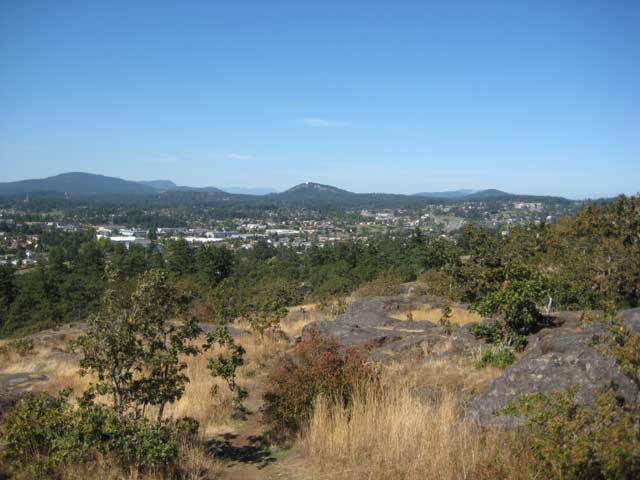“Suddenly, at sunset, a great bird, horrific as a Haida raven, swooped…down, down…to snatch a tiny Indian baby playing on the beach and soar away into the air with him.”—Gwen Cash.
It should come as no surprise that the yuletide spirit has influenced our mapmakers. In B.C., variations of Christmas can be found at least 18 times.
The Cassiar has its Christmas Creek, Lillooet region its Christmas Creek, Christmas and Tiny Tim lakes, and Revelstoke its Christmas Island. Upcoast we have Yule Lake and Rock. Also scattered about the province are nine Noels, although few if any of these have any connection with the holiday.
Closer to home we have Christmas Point, on the west side of the Malahat’s Finlayson Arm, and Victoria’s Christmas Hill. (Christmas Hill, by the way, has a tragic connection to the Cowichan Valley. It was on this Saanich hilltop that Hudson’s Bay Co. shepherd Peter Brown was murdered in 1852, and one of his slayers was arrested at Cowichan Bay. But that’s another story.)
B.C. mapmakers haven’t been as moved by the festive season as have their counterparts in other provinces, however. Mind you, we did come close at least once: St. Nicholas Peak, so-named by a surveyor around the turn of the last century because its profile reminded him of that jolly gentlemen, is 25 miles north of Kicking Horse Pass — just over the B.C.-Alberta border. Our loss is the wild rose province’s gain.
Three Canadian ‘Christmases” owe their origins to fallen servicemen of both world wars.
New Brunswick beats all other provinces with its December-flavoured mountain peaks: North Pole, St. Nicholas and Mounts Dasher, Dancer, Prancer, Vixen, Blitzen, Donder, Comet and Cupid. But there’s no Mount Rudolph — the government agent responsible for such matters having ruled the red-nosed reindeer to be too commercial!
To get back to Vancouver Island’s very own Christmas Hill and Christmas Point: Alan Rayburn, who for 10 years wrote a column on place names for Canadian Geographic magazine, has stated that “none of the stories associated with them has been collected for the official records”. The key word here is “official,” for the late B.C. journalist Gwen Cash told the story behind the naming of Chistmas Hill more than 40 years ago.
Until quite recently this low-browed hill with its grassy, Garry-oaked slopes and commanding views withstood encroaching development. As late as the 1960s, when I last hiked its crown, it was mostly unspoiled. Considerable building has taken place since then, alas.
It was here, the story goes, that history was made soon after the arrival of the HBCo. and the first Vancouver Island colonists. One early Christmas Eve, Mrs. Cash wrote, “The colonists, busy in their homes, prepared for the Birthday on the morrow. Indians, unmindful of Christian ways, drew up their canoes and camped where now stand the Parliament Buildings.
“Suddenly, at sunset, a great bird, horrific as a Haida raven, swooped out of the west. Down, down it planed on steady pinions to snatch a tiny Indian baby playing on the beach and soar away into the air with him.
“Distracted with grief, his young mother ran up and down the shore calling on her tribe for help. All night they searched for the child to no avail. With the story of the Blessed Babe whose birth they were to celebrate on the morrow much in their minds, settlers and fur traders joined in. With flaming torches in their hands, they pushed through the thick, frost-rimmed woods and when dawn came found him safe and laughing, a bronze baby playing among the fallen bronze leaves on the summit now known as Christmas Hill.”
So wrote Gwen Cash. Is it true? Certainly, it isn’t official. So how did Christmas Hill find its way onto the maps? We have both the British Admiralty and the late Montague Bridgman to thank. The former naval officer and noted Victoria merchant owned property on the northeastern summit of what the HBCo. had blandly christened Lake Hill. In 1937, when building his home, Bridgman wanted to give his estate a name with some flair and turned to old charts.
There it was, courtesy of the Admiralty surveyors of almost a century before: Christmas Hill. Where, according to Gwen Cash, “a small brown baby was found miraculously safe and well after a night of anxious terror on Christmas morning”.
www.twpaterson.com
